Facade lighting is widespread in cities and can significantly improve the ornamental qualities of buildings. This article will explain facade lighting and how to choose it. Let’s get started.
What Is Facade Lighting?
Facade lighting is a type of lighting used to illuminate the exterior of a building. It can highlight certain building features or provide general illumination.
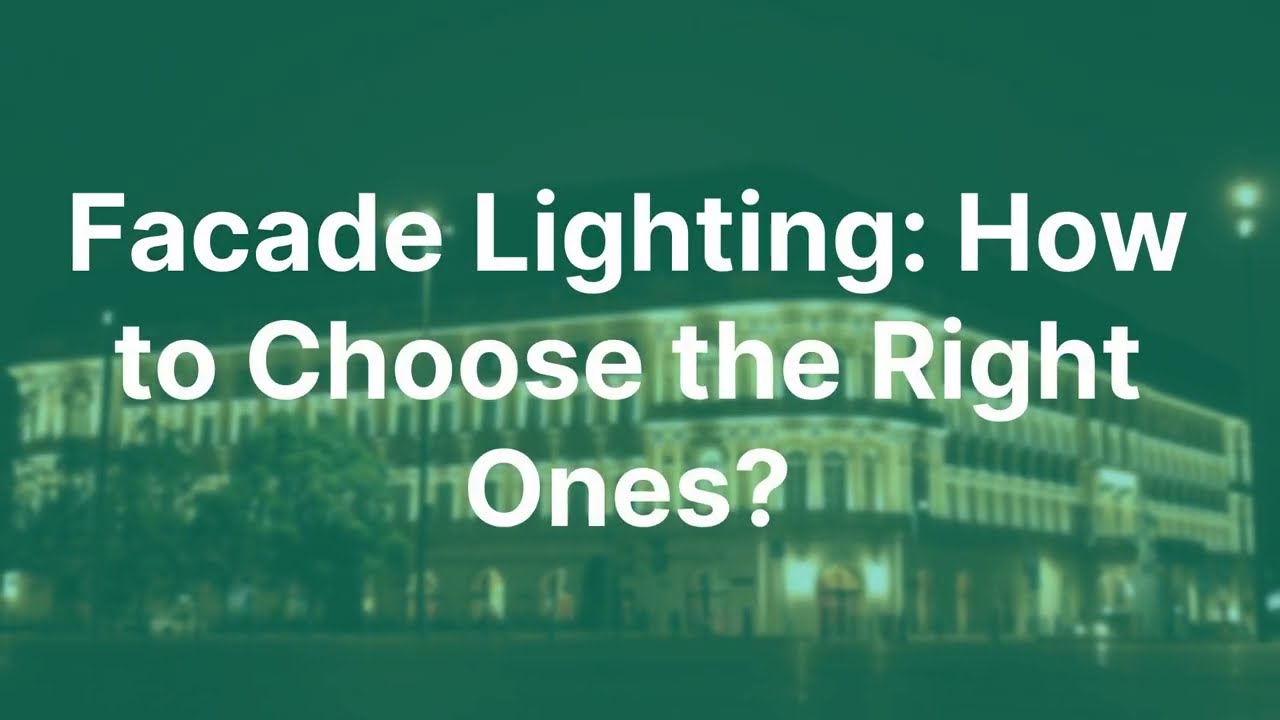
Various types of facade lighting can be used, including spotlights, floods, and downlights. The type of facade lighting used will usually depend on the building’s specific needs and the facade’s design.
In addition to providing aesthetic benefits, facade lighting can improve building safety and security. It can help make people feel safer when walking around at night and can also act as a deterrent against crime.
Why Is Facade Lighting Important?
Facade lighting is crucial in any building design as it helps enhance the artistic feel, ensures equal light distribution, and creates the perfect overall impression. Many classic architectural structures, such as the World’s Seven Wonders or other masterpieces, have amazing light on their principal front.
This is because these lights create an optimal overall feel. One can see a vast difference in these buildings and their acoustic performance mainly because of their appearance. In addition, many lighting products in the market can help create the perfect facade designs, especially for tourist attractions.
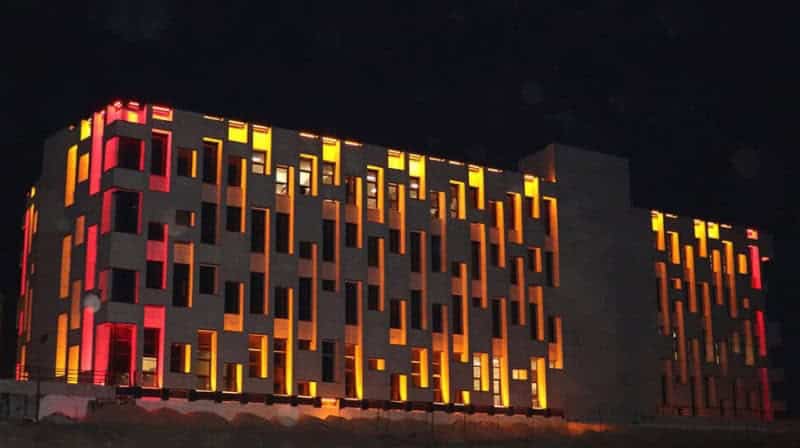
Many countries with a rich architectural background infuse these facade lighting ideas to make their landmarks more appealing. There are[plenty of countries famous for their lighting designs.
For instance, Paris has over 296 illuminated lights and is called the City of Lights. It was one of the first places to be recognized for its unique and attractive lighting designs and is still a popular site for visitors.
People prefer adding facade lighting to their buildings because it is available in various designs and options. Let us look at the different types of facade lighting and how they can help create the perfect exterior designs.
Ask For Free Quote
Let us Respond Promptly for your Needs :)
Types of Facade Lighting
Most buildings are decorated with different types of facade lighting today. The facades can have different shapes and designs, but having versatile lighting options can help create the best impressions. Buyers can find the following types of facade lighting for their buildings:
1. Solid Facade
A solid facade represents a smooth wall with no designs and is one of the most common elements of any building. Natural lighting techniques are the best options for these facades as they do not have design variations.
Most solid facades are large and smooth surfaces that can efficiently accommodate a range of facade lighting. Designers can even mix different temperatures and variations of light to create marvelous looks.

2. Vertically Divided Facade
Because these facades are vertical, they usually require a change of direction. Designers find options like narrow beams a good alternative for these buildings. The vertical division structure requires creating separation between walls and architectural sections.
In addition, one can also install downlights and uplights to enhance the vertically divided facades further.

3. Horizontally Divided Facade
The horizontal facade is the opposite of the vertically divided facades, forming different shadows under the light. Designers witness a long shadow on the horizontal divisions, which can enhance the texture and look of the facade lighting.
However, installing these lights can be a little difficult (because of tricky installation areas in horizontal divisions), but it can improve the appearance of your building.
However, one can reduce the shadows to illuminate the building, highlight attractive building elements, and create a more balanced look in the surroundings.
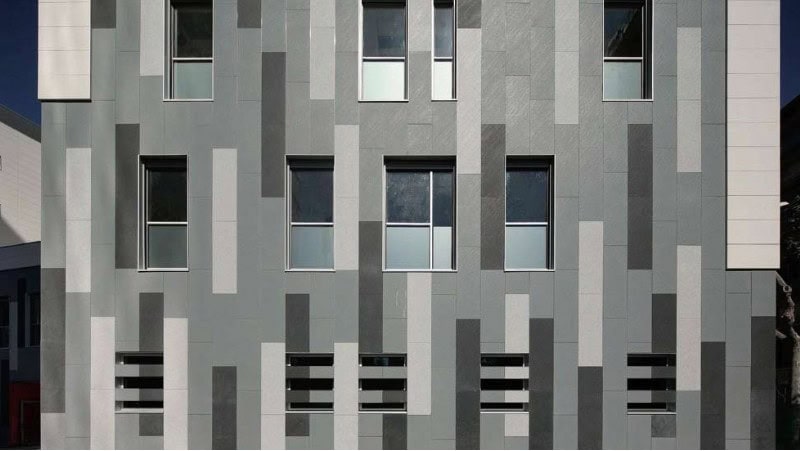
4. Perforated Facade
A perforated facade is the most accessible type of light. It allows designers to blend and mix different kinds of light fixtures in the surroundings to create perfect textures and highlight building features. They also help the surface pop out and make the facade appearance more visible.
Perforated facades require additional planning because blending different light varieties can be challenging. Moreover, factors like energy costs, the size of the projects, and maintenance costs all play vital roles. One may also need to consider the light shape and the overall architecture.
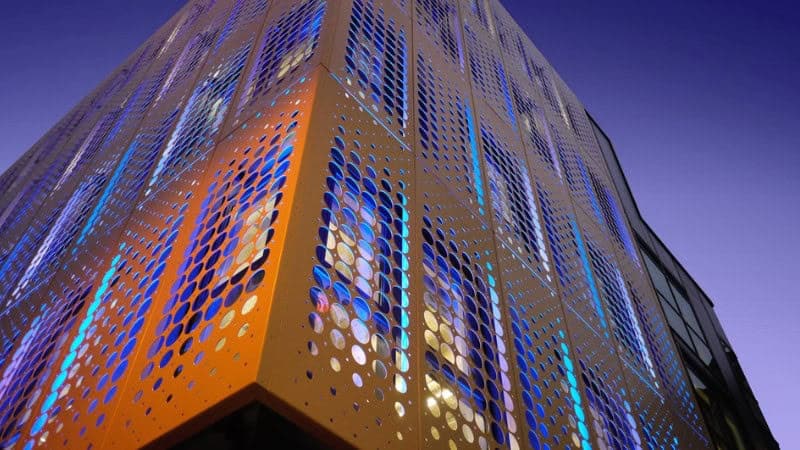
How to Light a Facade?
Creating the perfect facade lighting design requires considering several factors, making learning to light a facade complex. Best practices must be infused to save resources and get the best lighting effects on projects, even at night.

Design difficulty increases more if designers try to replicate natural lighting. The architectural structure can have different styles and variations, and knowing the best-fitting lights is crucial.
Designers can choose some facade lighting techniques while designing building exteriors.
1. Uniform Lighting
Uniform lighting means spreading an equal intensity of light throughout a facade. It is a fundamental facade lighting practice and can help create perfect designs even in large surface areas.
Floodlights are the most common choice for designers for uniform lighting since they provide balanced lighting throughout the building. Nevertheless, any light design and style can be used if it properly accentuates the structure.
Designers must place these lights close to buildings regardless of the light they wish to use. If the light is placed on top of the structure, it will spread uniformly through surfaces, creating a uniform lighting effect.

The essential element is the distance between the light source and the surface one wants to illuminate.
The light range is directly proportional to its intensity, so ensure the light is placed at a distance accordingly and consider directional lights with floodlights. The directional lights let the designer highlight specific building features.
Moreover, directional lights are smaller and weaker than floodlights but are still essential to architectural designs.
Choosing narrow beams to enhance the effect while avoiding light pollution is suitable.
2. Local Lighting
The local lighting focuses on specific points of the vertical facade structure, like the elevation, pillars, or building plates.
Interestingly, these local lights also offer energy efficiency. Designers can also mix different types of these lights and create better collective designs.
Ask For Free Quote
Let us Respond Promptly for your Needs :)
3. Hidden Illumination
Hidden illumination is the most complex lighting method but can help create perfect facade lighting designs. It can help create a dramatic look, uplift the building structure, and enhance its collective look.
Designers can select different approaches for these kinds of lighting, like silhouettes. Placing the lights in the right spots can help create shapes with shadows and attract focus on individual architectural elements.
Contouring is another effective option for lighting architectural buildings, as it gives the building a glow and creates more dramatic designs. Most architectural experts suggest using an LED strip for this.
There are some other techniques one can follow for better results, which include the following:
- Direct Lights or lights falling directly on the facade itself.
- Grazing or placing a facade light near a vertical surface. These lights are usually on the bottom and fade as they reach the top. This method helps highlight textured surfaces correctly.
- Washing Lights can light flat facades and add more life if placed far from the surface.
- Accentuating lights is the opposite of washing lights as this technique places the lights close to the facade and creates instant dramatic effects with columns, openings, and building details.
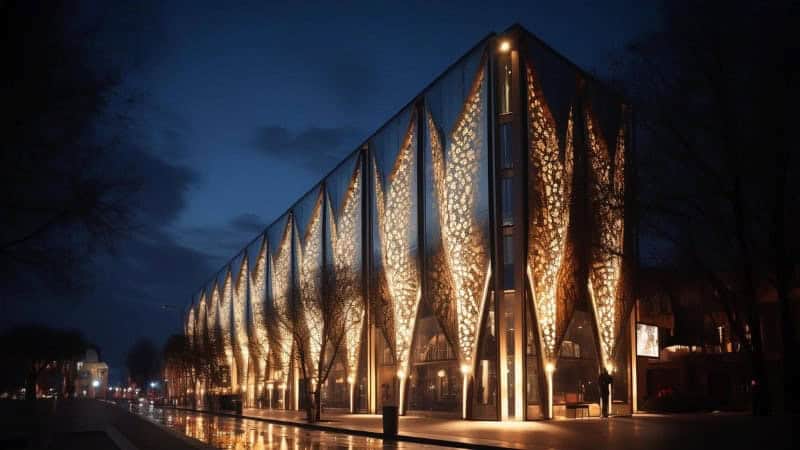
Common Facade Light Options
Experts can incorporate various designs and techniques to create the perfect facade lights, but knowing the suitable fixture options is also essential. Here is a breakdown of some of the most commonly used facade light choices to consider.
1. Wall Lights
Wall lights are most popular because of their straightforward design options. These lights can help the shadow-light effect on the facade surface, as walls can shine in different directions.
Depending on the building design, blending different light directions can help create a better collective result.
For instance, a building with a single floor will illuminate perfectly with the single wall light, and Multistory facilities would require downward and upward wall lights.
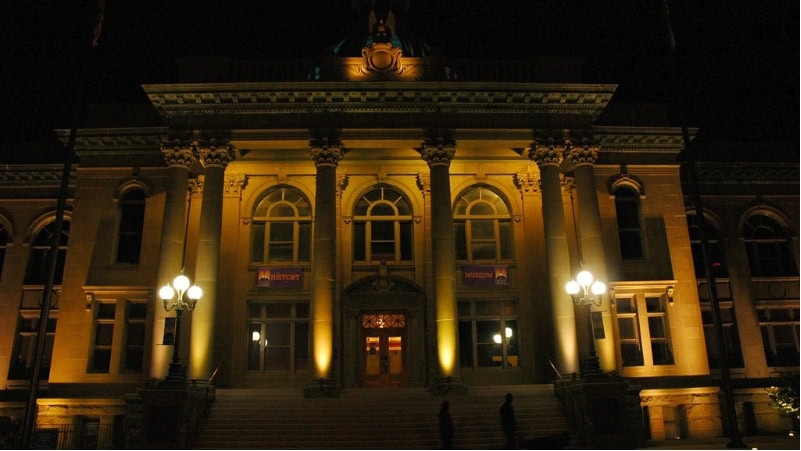
2. In-Ground Up Lights
Some buildings require lights from the base to the top, so designers need in-ground lights. Because of their higher light intensity, these lights can cover a large area, but setting the right light angle plays a crucial role in the result of these facade lighting projects.
Designers can install a single high-powered light or multiple smaller lights to create the same effect. It depends on how one wants to see the final design.

3. LED Floodlights
All buildings, like offices and homes, have LEDs because of their higher energy efficiency, better performance, etc. In addition to these spots, LED lights can be used as floodlights for facades.
These lights are eco-friendly, emit good-quality light, and have a higher power beam than most options available. In addition, a designer can switch these lights, as they do not kill bugs and other smaller creatures.

4. Ceiling Lights
Ceiling lights include light fixtures that fit into the ceiling for quick access, better texture results, and easy maintenance. They form a downward light effect, creating a modernistic architecture. These lights are best at night because they can develop symmetrical designs when seen from a distance. The designs can fix these ceiling lights in almost any shape and create the perfect architecture surrounding them.
Designers add these ceiling lights to the roof for more light and shine, and they do not need extra protection from snow, rain, or other weather hazards. It allows designers to develop the most versatile design options quickly.
Ask For Free Quote
Let us Respond Promptly for your Needs :)
Tips for Exterior Facade Lighting Design (Artificial Lighting Methods)
Lighting the perfect exterior requires incorporating the right artificial lighting products and techniques. While these techniques may differ for each building and design, here are some tips to remember while devising the next artificial light design.
1. Know the Best Areas to Illuminate
Making the perfect facade design does not require filling the area with endless lights to make everything bright. Instead, knowing the most cost and energy-efficient methods matters the most. It begins with assessing the existing structure and design.
The designers should know the darkest spots of the building and then select a fixture and lighting method accordingly.
We suggest installing an equal number of lights throughout the building. Most people decorate the fronts of their houses without considering the rear.
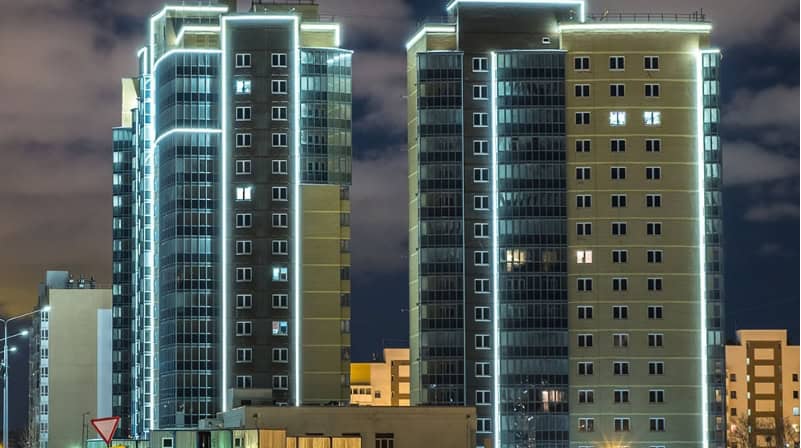
2. Avoid Imitating Natural light Everywhere.
Most designers and building owners try to imitate natural lighting with their facade designs. While adding a few natural elements here is good, it is best not to make the whole building look like that.
Facade lighting offers plenty of variations and design choices. Sticking to natural designs can ultimately limit a project’s potential. In addition, it is essential to make the building as noticeable at night as possible because most observers pass by.
The facade lights should stand out enough to attract attention, make one pay attention to one’s vision, and make one look good altogether at night.
3. Determine Major ViewPoints
Perception and angles impact the facade light results at night. Viewers will see the facade lighting design from a particular angle, and the lights must look attractive. Designers must assess the significant viewpoints (or areas where people will see the fixtures).
Identifying viewpoints will also help determine the best light angles to install. The light beam angle is essential because it can cause light glare, which is uncomfortable. Covering major viewpoints will help develop a better design picture collectively.

- Consider External Structure Factors
Even the best facade lighting does not help if it is not visible. Many buildings look at their beauty and nighttime lighting only because of an obstruction, such as a tree, building, monument, etc.
Ensure all facade lights are obvious to the eye. An excellent way to do this is to take an aerial shot of the finalized project. The photographs will help you get a better idea from a third-party perspective and make design alternations accordingly.
- Consider Water Body Design
Landmarks and other commercial buildings often have fountains, ponds, and other water bodies that are not fully visible at night. Nevertheless, facade light fixtures can help brighten these water bodies and add aesthetic value to the area.
These ideas are best for large fountains, as they are mainly in the center of the area and serve as a focal point for viewers. It is best to focus more light on the water rather than the body.
For instance, a retail area can have an extravagant, celebrity-like design, allowing the visitors to view magnificent beauty.
Similarly, landmarks are the center points of any area and attract much attention. For a more dynamic design, try adding long-range facade lights to these landmarks.
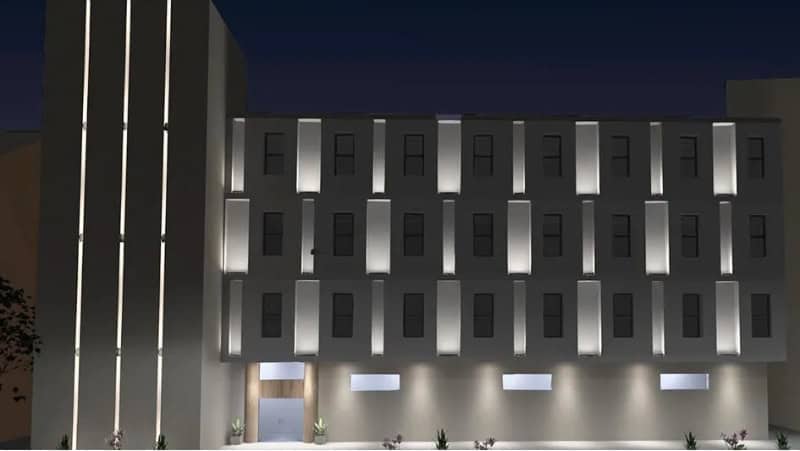
Conclusion
Facade light is the perfect way to enhance and add more life to any structure or building that might otherwise be plain. These lights come in different design variations, installation options, and color temperature options.
Architectural experts can experiment with as many looks as possible and create a perfect final look. Facade lighting can also make the structure stand out, add more aesthetic value, and increase its appeal.
Nevertheless, one must choose the proper design practices and add elements that blend well with the design surroundings. Try incorporating simple components like a floodlight and advancing to more complex ones.
Get a Quote for Your Facade Lighting Projects Now
Looking to enhance the appeal of your building’s facade? Explore RC Lighting’s range of high-quality facade lighting solutions.
Our products are designed to provide aesthetic appeal and functionality, ensuring your building stands out while remaining energy-efficient. Contact us today to learn how our facade lighting can transform your space.
Reaching out for professional assistance with the facade designs can help formulate the best practices. Connect with the professionals at RC Lighting for more insight and details on the facade lighting options.



